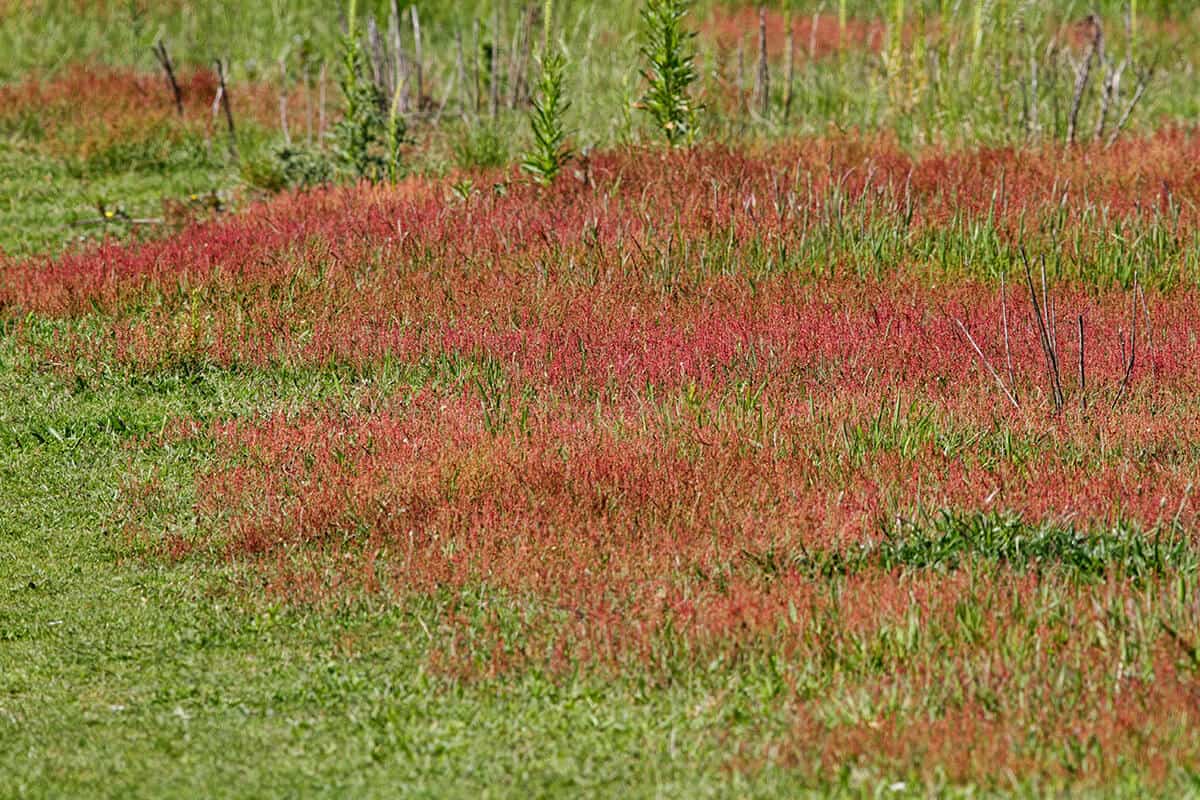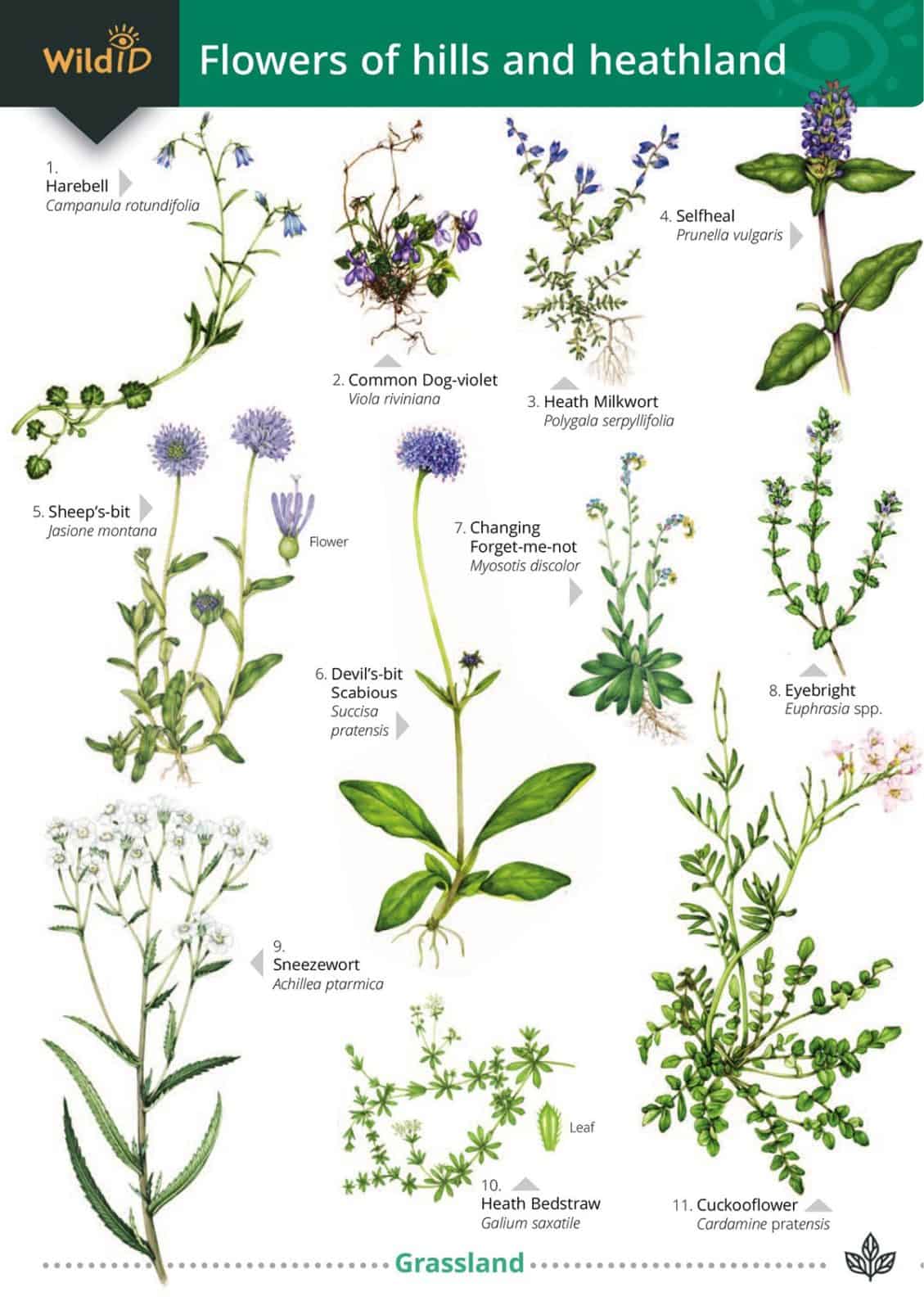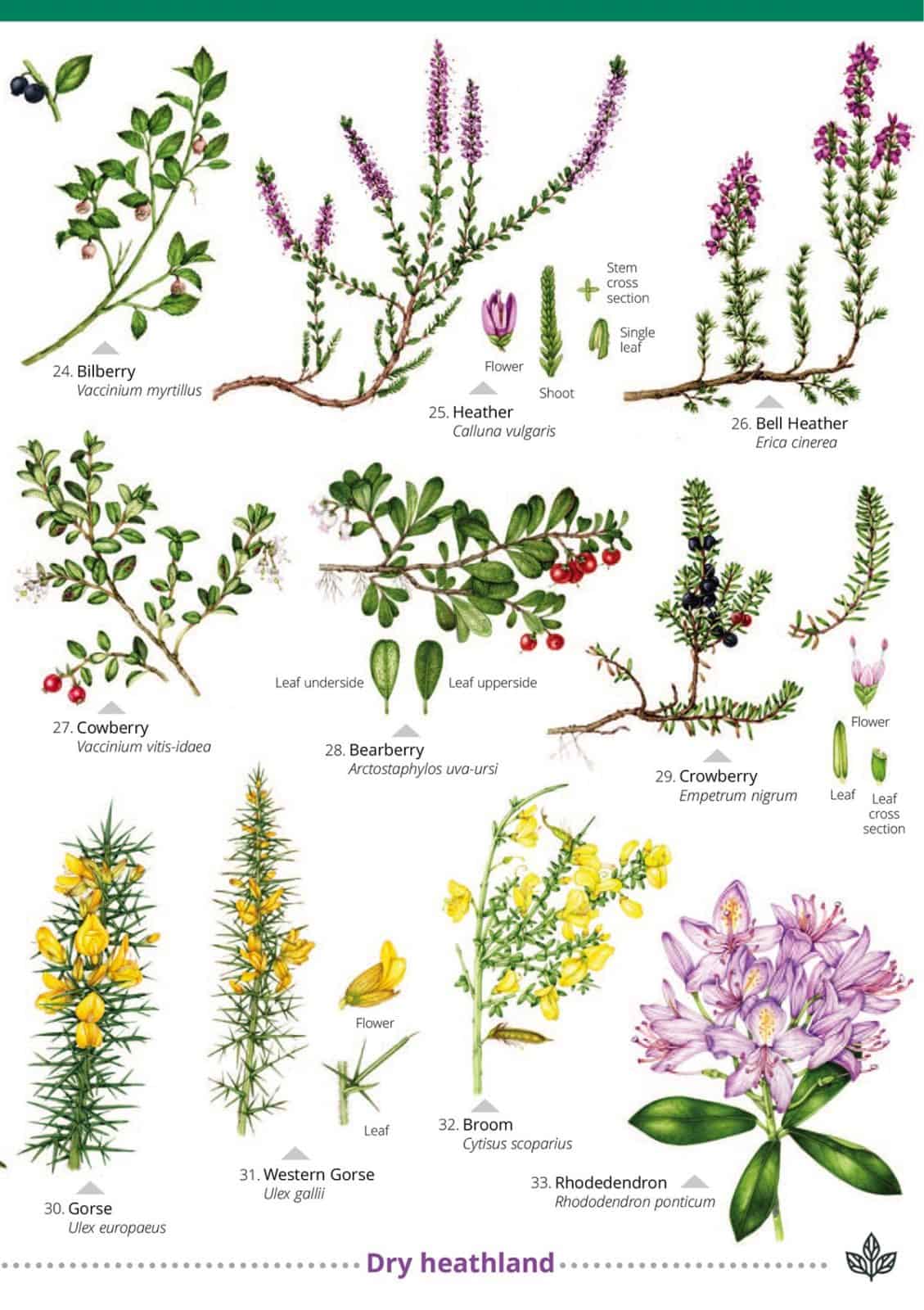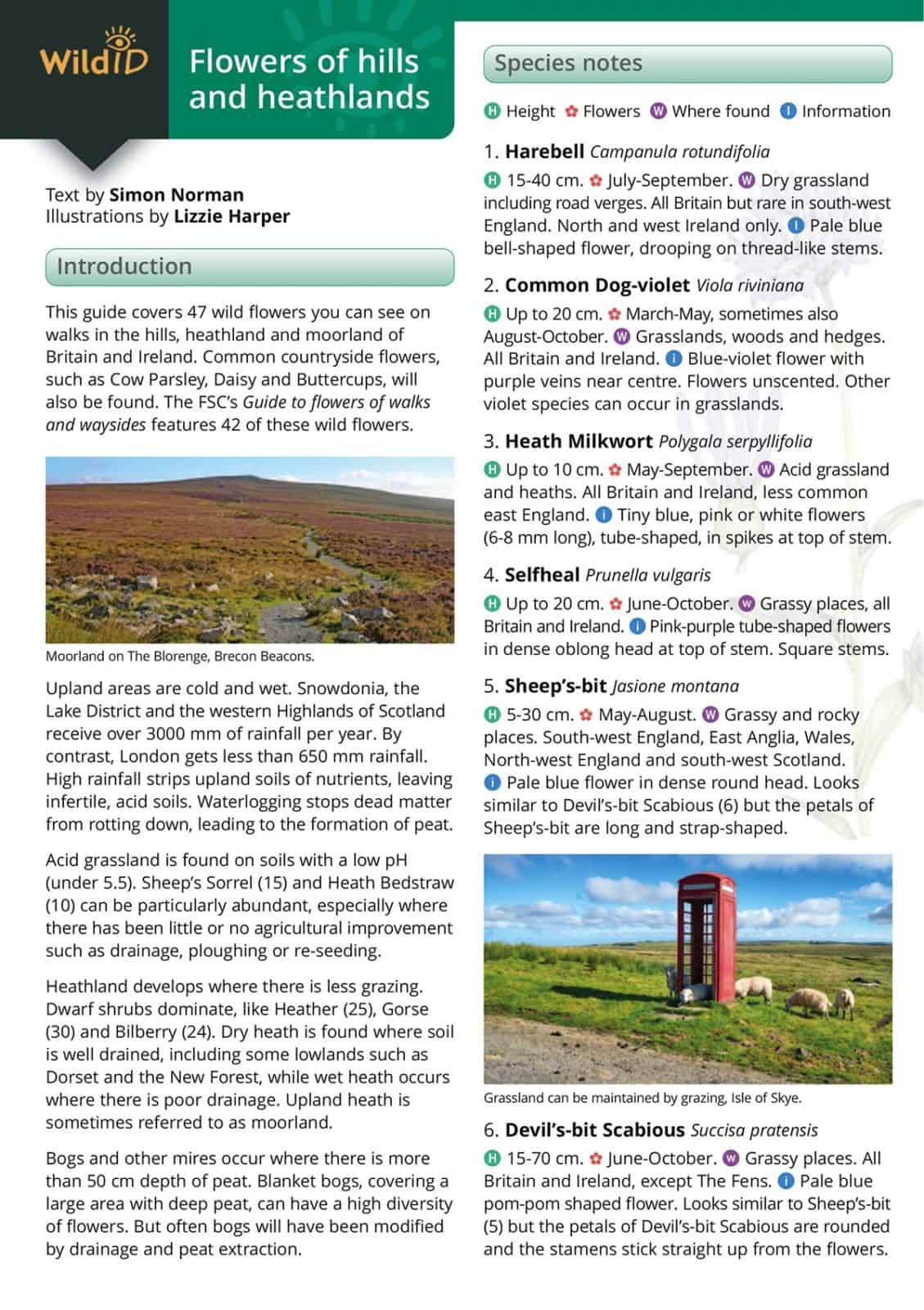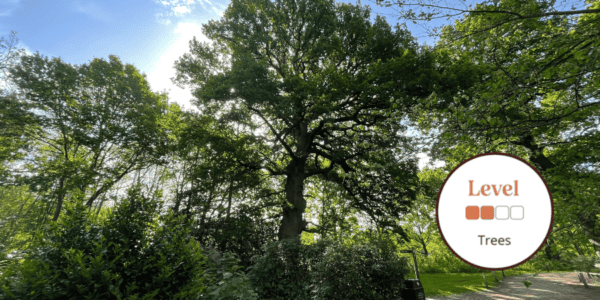Hill and heathland flowers
The Hill and heathland flowers guide covers 47 wild flowers you can see on walks in Britain and Ireland.
Beautiful colour paintings by Lizzie Harper show the key features of each plant, including flowers, leaves and stems. Accompanying text on the reverse side highlights important features to look out for. The guide features flowers in three habitats: grassland, dry heathland and wet heathland and bogs. Use this concise fold-out guide to quickly put a name to the flowers that you see.
Hills and heathland are a great place to look for wild flowers. Grassland is common, often with sheep or cattle grazing. Although it might look like there is only grass, a closer look will reveal lots of short flowering plants. There are flowers to spot from early spring to late autumn – in whites, blues, yellows and purples. Heathland and moorland vegetation develops where there is less grazing. Dwarf shrubs dominate, including Heather, Gorse, Western Gorse, Cowberry, Crowberry and Bilberry. In wet places in the uplands, wet heathland and bogs have a range of special flowers. From beautiful flowers like Bog Asphodel and Bogbean to insect-eating plants like Sundew and Butterwort, they are exciting places to explore.
Of course upland areas can be cold and wet. Indeed Snowdonia, the Lake District and the Scottish Highlands get several times as much rainfall in a year than London. This high rainfall strips upland soils of nutrients. In places waterlogging stops dead matter from rotting away, thus forming peat. But it is these infertile soils which can support unusual and interesting flowers.

